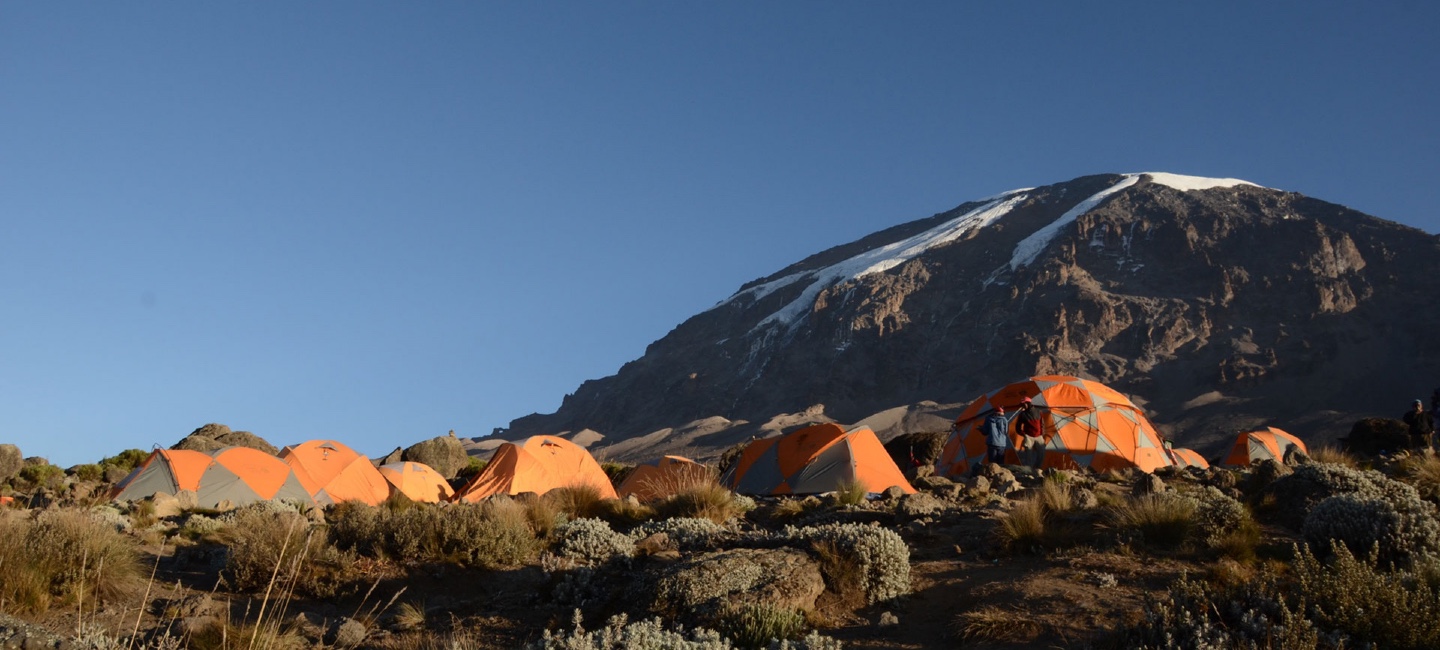The Lemosho route is one of the best options for climbing Kilimanjaro. The route gives you plenty of time to acclimatize and takes in the entire mountain scenery as it traverses it from west to east.
The western route requires a bit longer drive to the trailhead but is well worth it because you get to drive through some wild area and may even spot a buffalo or an elephant.
During the first few days of the trip, you will ascend the western flank of the mountain, a side of the peak few visitors see, as you ascend through lowland jungles to the Shira Plateau. The remainder of the trek follows the classic Machame route, after reaching Shira Camp 2 on the third day, and the number of hikers on the trail increases.
The fourth day of trekking is helpful for acclimatization, as you ascend to the Lava Tower (4600m / 15,000 feet) before descending to the Barranco Valley campsite.
Another day of hiking brings you to Barafu’s high camp, which is located on a barren volcanic plain. Climbers relax here in the afternoon before making the nighttime summit push. It takes 6 hours to reach the crater rim and another hour to cross the rim of the crater to reach Uhuru Peak, Africa’s final summit and highest point.
When to Climb Kilimanjaro?
The best time to climb Kilimanjaro is between Mid-June and September, warm and sunny in the day with low rainfall. Trails are busier but it’s migratory season for wildlife, so it’s ideal for combining with a safari.
However, Kilimanjaro can be climbed all year; even the short rainy seasons (March through May, and November and December) don’t stop hiking, and small rains can be enjoyable on the trail. Another popular time is from January through early March.
It’s still chilly in the evenings and mornings (Uhuru Peak’s weather range from -7 to -29°C at night), but that’s the case whenever time of year you go.
Welcome to Kilimanjaro. One of our representatives will pick you from Kilimanjaro International Airport and transfer to Moshi, the gateway to Kilimanjaro. Meet your guide and check your gears in the evening in preparation for the trek the following day.
It takes about 3 to 4 hour’s drive to Londorossi Gate, the beginning point for the climb. It’s an amazing ride through some remote area, so keep your eye out for wildlife.
After a few hours of formalities with the park rangers at the gate, you’ll be on the trail. The trail passes through lowland forests, where giant Colobus, monkeys which are common.
The first part of the day’s hiking is fairly steep as you climb up out of the jungle and into the moorland ecosystem dominated by Giant Heathers and a variety of wildflowers.
You will first reach Shira Ridge before continuing gently downhill through the Shira Plateau to Shira 1 Camp for rest and lunch. We then cross the Shira Plateau to Shira 2 camp, where we can see the Western Breach if the sky is clear.
Today’s long day allows us to acclimatize at the high camps with short day before our big summit day.
Leaving Shira 2 in the morning, you ascend towards Kibo, the western glaciers visible across the rugged high-altitude desert of volcanic rocks and boulders.
The trail ascends to Lava Tower (15000 feet / 4600m) before descending into Barranco Valley. The area before the campsite is known as the “Garden of the Senecios,” and it has several large senecios as well as shorter lobelia plants.
It takes 7 to 8 hours to walk and the entire ascent is only 110m, but having climbed much higher and descended back down helps with acclimatization.
Today is a challenging climb up the steep Barranco wall (some scrambling but not technically hard), undoubtedly one of the trek’s highlights.
You’ll be able to take the breathtaking views at the summit before descending into the Karanga Valley, where we’ll stop for lunch and spend the rest of the day acclimatizing and resting.
Today we make our final push to Base Camp, and our longer early days are paying off.
Arriving at Barafu around lunchtime gives us to spend the rest of the day resting our legs and preparing for the big push to Africa’s roof. After dinner, you’ll return to your tents for some rest before we begin our ascent at midnight.
The day begins at midnight with the final push to the summit. The six-hour climb up a steep hill to the summit rim is cold and challenging. The trail is doable, but it is steep and has many switchbacks.
The summit rim is reached just before sunrise, and the climb around the rim to Kilimanjaro Peak, Africa’s ultimate summit and highest point. You’ll return to Barafu Hut for a short rest and snacks before heading down to Mweka camp (3068m / 10,065feet).
One of the reasons for this long day of trekking is to avoid issues with high altitude and get you back down to a lower elevation quickly.
From campsite, it is about 4 to 5 hours descent through the forest to Mweka gate to collect certificates and meet the vehicle. Return to Moshi for the evening and a farewell dinner with your guides.
After breakfast, according to your flight schedule we will drop you at the airport or assist you in catching the shuttle to Nairobi and trip concludes.



